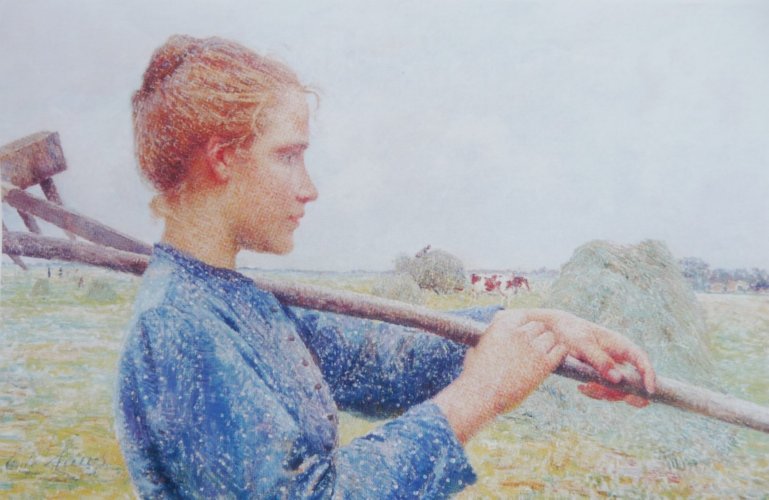Description:
Edward Aleksander Raczyński purchased eleven paintings of Belgian Impressionists and Post-Impressionists for his collection. Why did he decide to purchase such a large group of works from this nationality? If we trace Edward Aleksander’s collecting choices, we will notice that landscapes and genre scenes are a popular theme in the Rogalińska Gallery. It is therefore not surprising that he purchased pleasant paintings with a bright, sunny palette. It is also possible that the purchase was prompted by the previously acquired works of Podkowiński and Pankiewicz, which were kept in the same vein. Another possible origin of the expansion of the collection with this group is also possible. Analyzing the collector’s choice, it is worth paying attention to the historical situation in both Poland and Belgium. At the end of the 19th century Poland is under partitions, while Belgium is rebuilding its statehood after recently regaining independence. The Belgian paintings collected by Raczyński are a reflection of the restored freedom. Similarly to his ancestors, Edward Aleksander wanted to remind his compatriots of the need to fight against the occupiers. I think that placing these works in the open-to-everyone Gallery at the Rogalin Palace was supposed to warm the hearts and give hope for regaining independence.
Emile Claus (1849-1924) is considered one of the greatest representatives of the Impressionist trend, called Luminism. During his travels to Spain and Morocco, Claus was delighted with the light, especially the phenomenon of the scattering of light in nature. The dependencies he captured there were transferred to his creativity, creating works that are studies of light and color. Claus also developed his own technique based on pointillism. What is pointillism? This is a painting technique that involves applying paint to the canvas in the form of small dots of pure colors. Depending on the distance of the viewer from the canvas, the color spots blurred or merged into a whole, showing the image.
Description of the painting: “Girl for Haymaking” is a work depicting the everyday work of peasants. It fits into the trend of peasantry, so popular in Poland at the turn of the 19th and 20th centuries. The foreground is occupied by the figure of a girl, who becomes the personification of the working people. She is shown in profile, both hands are exposed on the shaft of forks placed on her left shoulder. The background for the portrait is an open field space dotted with haystacks.


